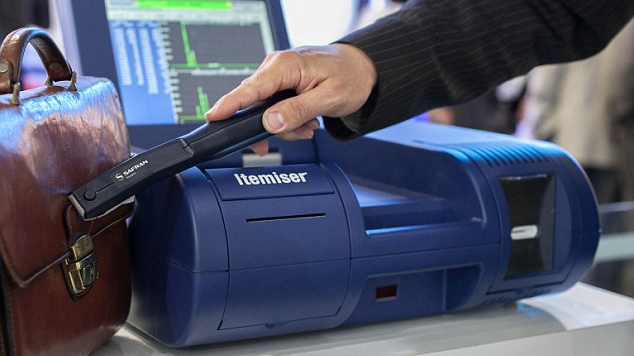It doesn’t matter if you’ve just spent 30 minutes in the regular TSA queues, less than 5 minutes (make that 10 minutes – TSA thinks they’re fooling someone) in the TSA Pre-Check line or 3 minutes in the CLEAR area, all lines eventually lead to, not Rome, but the security scanners.
Once you’re there, it doesn’t matter if you’ve done this a bajillion times before, or even if you haven’t and know what to do to get through the scanners quickly, you might go through the scanner and get the random beeping alarm. Or maybe you got the dreaded SSSS (here’s what to do if you consistently get SSSS) on your boarding pass.
Either way, the TSA workers pull you aside and say you have to go through a secondary screening. It usually just involves them swabbing your hands (and/or your cell phone, laptop, food, bag, shoes, etc.), putting the swab in an Explosives Trace Detector (ETD) and, when given the all-clear, you’re told you can be on your merry way.
But why?
But why are they doing that? And why YOU?
The “why you” is pretty simple – it’s usually at random. Unless you’re on the super-secret list that increases your chances of getting SSSS on your boarding pass, the TSA’s machines are said to pick people at random for swabbing.
As for the why, they’re usually checking for traces of explosives. These could include:
- NG (nitroglycerin)
- ANFO (ammonium nitrate/fuel oil)
- PETN (pentaerythritol tetranitrate)
- RDX (nitramide)
- TNT (trinitrotoluene)
- Tetryl (trinitrophenylmethylnitramine)
- Semtex (plastic explosives)
- Nitrates
- HMX (octogen)
- GSR (gunshot residue)
(Heads up that there’s no specific list of what the TSA is looking for – that information is “Sensitive Security Information (SSI),” but the above are some of the items that potentially make things go “BOOM,” so…)
Anyway, if they decide to swab your phone, laptop, food, bag or shoes, there isn’t much you can do – hopefully, you wouldn’t have anything on those that would cause a problem when their swab goes through the ETD (or if you think they might, wipe them down beforehand). However, your hands have a higher chance of an issue, since they can potentially handle things that have, for example, glycerine or nitrates, since there are lots of typical, everyday items that have those chemicals in them. So just in case, here’s how to help avoid getting a false positive on a hand swab test.
Want to comment on this post? Great! Read this first to help ensure it gets approved.
Want to sponsor a post, write something for Your Mileage May Vary or put ads on our site? Click here for more info.
Like this post? Please share it! We have plenty more just like it and would love it if you decided to hang around and sign up to get emailed notifications of when we post.
Whether you’ve read our articles before or this is the first time you’re stopping by, we’re really glad you’re here and hope you come back to visit again!
This post first appeared on Your Mileage May Vary
Join our mailing list to receive the latest news and updates from our team.

